The pleasure of cherries
Tinker, tailor, soldier, sailor, Cherry Tree Lane, or cherry orchard? The fleeting cherry season is here.
There’s the land or cherry-isle, Whose plantations fully show All the year where cherries grow
Substack has many paths. I love the way they meander and bring to mind one of my favourite words, serendipity. Thinking about a future post with a restaurateur and how sustainable restaurants can serve everyone, up comes a post from
about just the same subject. And this week, whilst thinking about cherry season, a liked note leads me to the streets of Jerusalem, where is trying hard to remember the word for cherry in Arabic.My memory of cherries in Turkey isn’t a positive one. In Istanbul, local shoppers are crowding around a stall heaped with the first cherries of the season. The stall holder hands out samples of his fruit. Thinking that it would be okay, I reach forward to try one, and get my hand slapped away. Still, I’m grateful to Tanya for sharing one of my life’s frustrations; wanting to buy something in a market and not knowing the word for it. And being too proud to just point and use limited sign language.
Here in the UK, the first cherries of the season usually arrive at market at the of June and beginning of July. The months before are a fraught time for farmers, checking the weather conditions for their fleeting and fragile crop. They’ve made sure that their trees are protected against flocks of birds who are rather partial to the fruits as you’ll know if you own a cherry tree. One minute the little red and white globes are adorning the branches, then the next morning, gone. Earlier in the year I talked to fruit grower Malcolm Stone about the trials of getting fruit to market.
Cherries are embedded in our collective culture. The root of the word cherry in English dates back to the Norman conquest, from the northern French dialect word cherise (a variant of the standard modern French cerise). In Medieval times cherry fairs celebrated the season. There are recipes for cherries in The Forme of Cury around 1390. Do click on the link to see a delightful Medieval illustration of a boy stealing cherries. The British Library notes that ‘The cherry harvest was closely associated with the festivities of midsummer and in medieval literature, the expression 'cherry time' was often used to signify short-lived good times.’
Stowmarket in Suffolk used to hold a yearly cherry fair to celebrate its connection with growing the fruit.
According to Kent Orchards, Henry Vlll is credited with starting the renaissance of English cherries when in 1533 he introduced three new sweet varieties to Teynham in Kent after tasting them in Flanders. During the 16th century, Henry VIII’s head fruiterer Richard Harris (Harrys) established mother orchards now known as the ‘Kings Orchards’ in the area of Teynham. The Stowmarket Food Museum suggests that cherries were brought here in the first century AD. There are many stories about Roman soldiers being given cherries as part of their rations. It’s thought the pits they discarded encouraged the growth of wild cherry trees throughout the empire, including Britain.
Girls have been predicting who they’ll marry using the cherry stone counting rhyme ‘Tinker, tailor, soldier, sailor’ for centuries. The first written record with these professions grouped together dates from 1695.
Before the invention of the hot water bottle, heated cherry stones were placed in pans to warm up beds on cold winter nights.
In the past, cherry trees were large, often reaching 60 feet (18.3 m) in height. Pickers had to use tall ladders to reach the fruit. The ladders were wide at the base to provide stability, and were graded according to the numbers of staves (rungs), from 25 to 65. The pickers were usually women; ‘ladder men’ had the skilled job of shifting and repositioning the ladders. You often heard in the orchard, “don’t brut the trees”, in other words be careful, do not damage the branches, otherwise you may lose some of the crop. (Quote from Kent Orchards.)
The pickers harvested the cherries into a basket called a kibsey, which when full, weighed around 12lb (5.4 kg).
Sadly we don’t grow enough to cope with demand. Britain has lost 90% of its cherry orchards. At the start of the 20th Century there were more than 5,000 ha of cherry orchards in Kent. By the end of the century this was reduced to less than 600 ha. Following the 2nd world war, cherry orchards were planted over with more vital crops to feed the people.
In 2009, Bangor university noted that ‘There are approximately 380ha of commercial cherry orchard in the UK. This area only manages to meet around 5% (by value) of annual expenditure on cherries. The remaining 95%, with a retail value of around £40m, is imported.’
The amount of cherries grown in the UK is tiny compared with many other countries. Turkey is the country with the largest volume of cherry and sour cherry production.
National Cherry Day began in 2008 to support UK cherry growers but, as fleetingly as cherries on a tree, it lasted only for a couple of years.
It’s now likely that we have more Cherry Tree Lanes than actual cherry trees. The National Trust is carrying out a place name study, where street names replace lost orchards. Their research on orchards reflects a similar story of loss, showing that
‘more than half (56 per cent) of orchards have been lost. Traditional orchards, which are particularly beneficial for wildlife, have also decreased by 81% – this is equivalent to an area the size of the West Midlands. 43,017 hectares (106,297 acres) are left growing today - equivalent to an area slightly larger than the Isle of Wight’
It’s not too late to revive our cherry production. Year on year, more trees are being planted on dwarf root stock so that the trees aren’t the giants they used to be when huge ladders would be needed to reach the top branches. Cherries remain a high risk fruit to grow, with many UK growers using tunnel protection due to risk of rainfall at harvest time which causes the fruit to split.
Farmer Michael Dallaway hit upon the idea of renting out his cherry trees a year at a time, allowing you to come to the farm and pick your fruit. Michael only grows cherries so his season at market with fresh fruit is short. At other times of the year he sells his rich cherry juice, made with fruit that’s been split by rain and can’t be sold whole. His trees sell out very quickly, with a waiting list each year. If you can, it’s a fabulous opportunity to pick your own and fill your freezer and pantry.
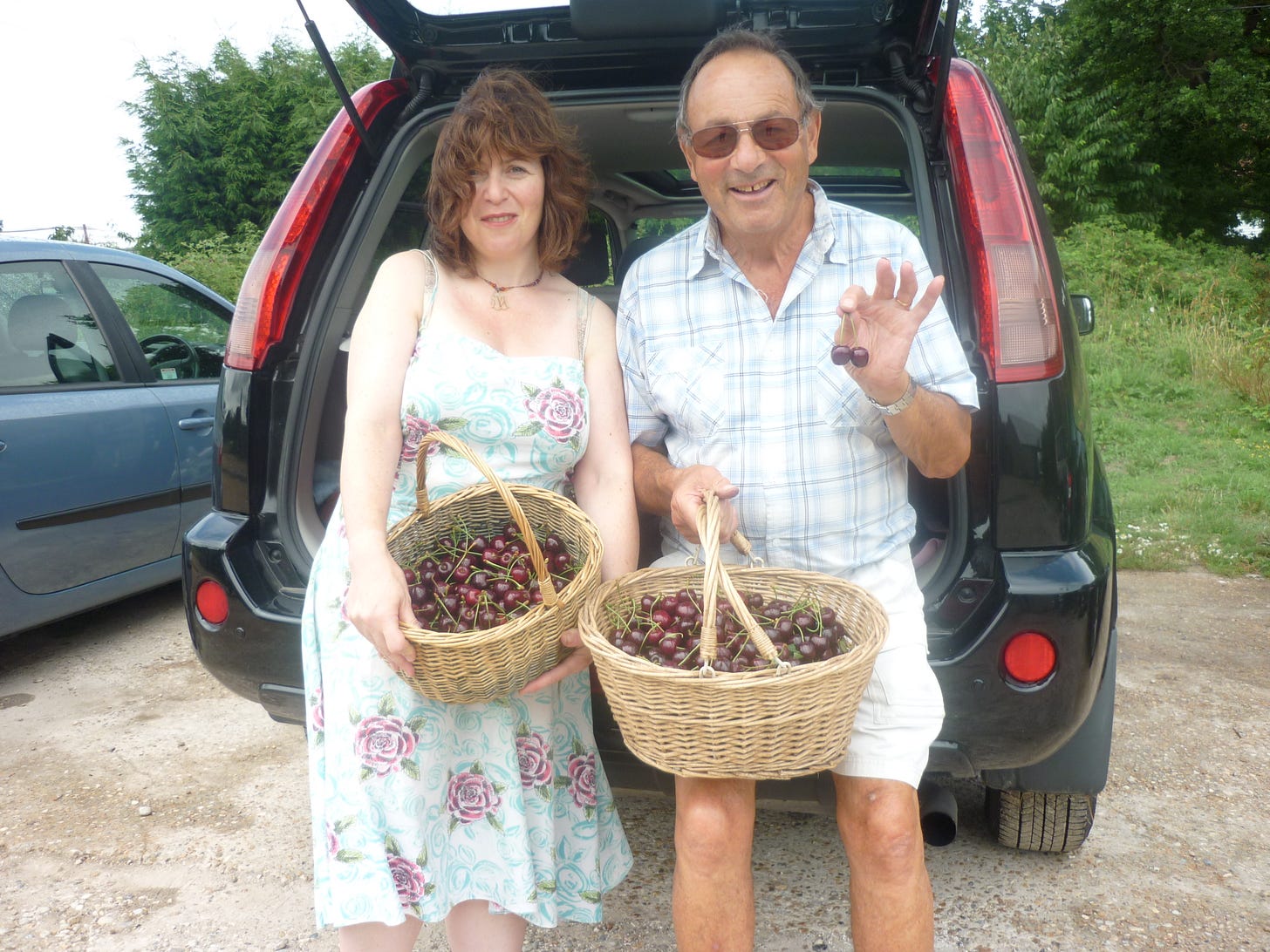
In Krakow a few years ago I was lucky enough to be there at cherry season, and came home with my luggage loaded with sour cherries. They’re difficult to find fresh in the UK. One farmer told me that birds prefer them to sweet cherries making them harder to grow, but Polish farmers obviously manage it! Farmers did grow sour morello cherries here. Lenham in Kent was the home of Grants morella cherry brandy, made there since 1774, still made today by Kent brewery Shepherd Neame.
We grow beautiful varieties in the UK, some of them more modest than brash and bigger, American imports, including Napoleons, known as Naps with their white blushed flesh. Do buy locally grown cherries and show your support for this beautiful fruit if you can. If like me you love the names given to fruit varieties, you’ll love this. Some of these varieties you’ll only taste if you can plant your own tree and be lucky enough to keep the birds away, or if you can get to a farmers market or to Brogdale, the National Fruit Collection.
This weekend, Brogdale hosts the National Cherry and soft fruit show. Judging is on Friday, and on Saturday, as Brogdale say, ‘the award winning fruit and THE BEST cherries, strawberries, raspberries, blackberries and more will be on show and for sale at our Cherry Tours and PYO event on 13th July.’
At farm stalls such as Perry Court Farm and Chegworth Valley, you may be able to taste before you buy without getting your hand slapped away. It’s not uncommon to see customers leaving farmers’ markets loaded down with fruit baskets.
Across the short season, different varieties come to market. Michael grows 7; Merchant, Kordia, Colney, Penny, Korvik, Sweetheart and Regina.
Cherries are a versatile fruit, pairing beautifully with both sweet and savoury. If you are lucky enough to have a glut, or you’ve bought such a thing as too many, they make fabulous chutney and pickles. This is a slightly adapted recipe from Jane Grigson.
Pickled cherries
1kg sweet English cherries, washed, stone in, stalks trimmed
1L White wine vinegar
500g soft brown sugar,
Finely pared zest of 1 lemon
2 whole cloves, 1 star anise, 1 dried chilli
6 lightly crushed juniper berries
1 x 5cm-long cinnamon stick
2 x 1 litre glass jars, or the equivalent of smaller jars
Boil the vinegar, sugar and spices and leave overnight to become mellow and fruity. The next day, add the washed and dried cherries to two sterilised 1 litre jars and pour over the cool, strained vinegar, making sure that the fruit is covered. Allow to mature for several months before using.

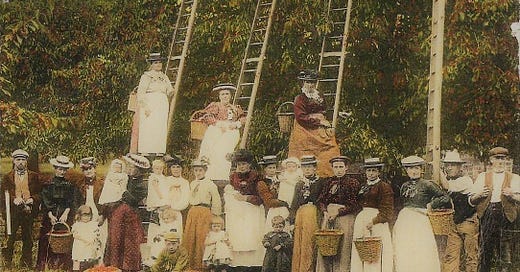






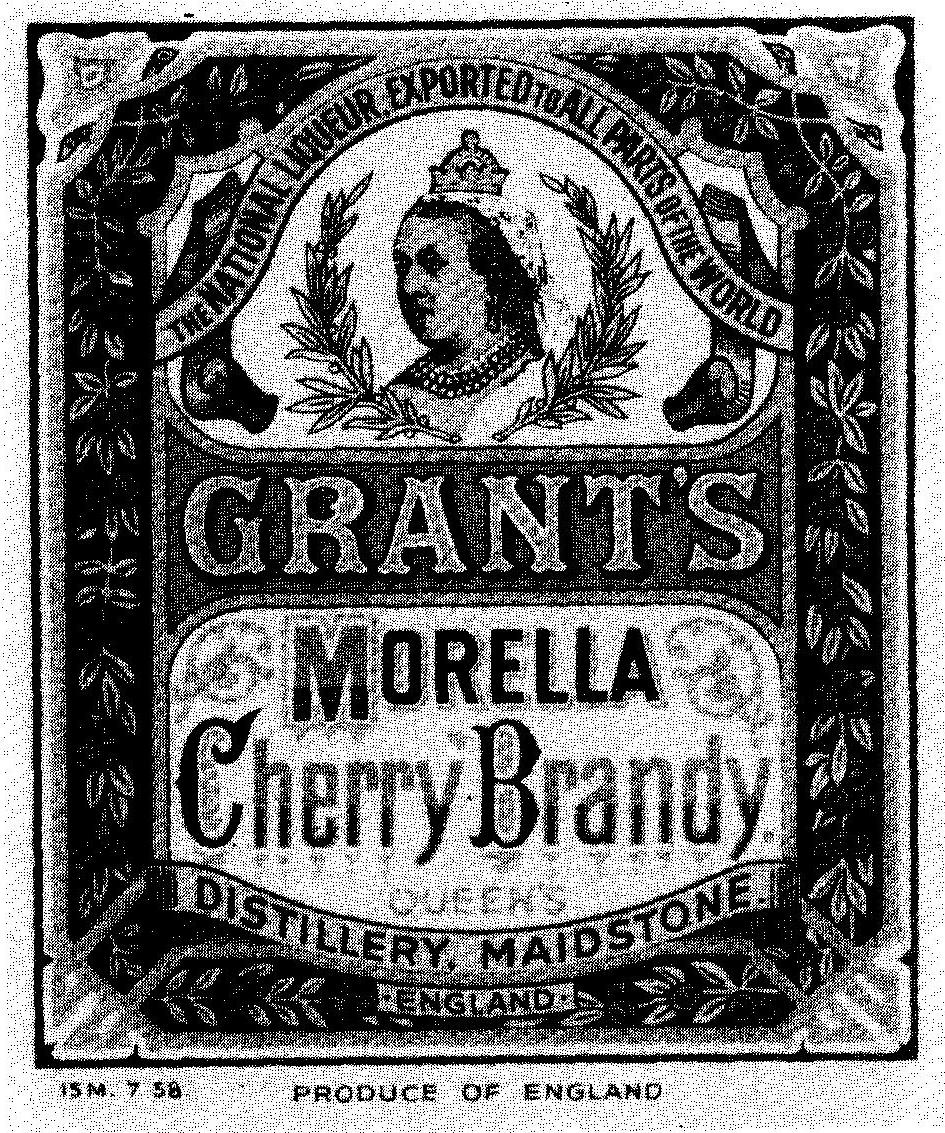
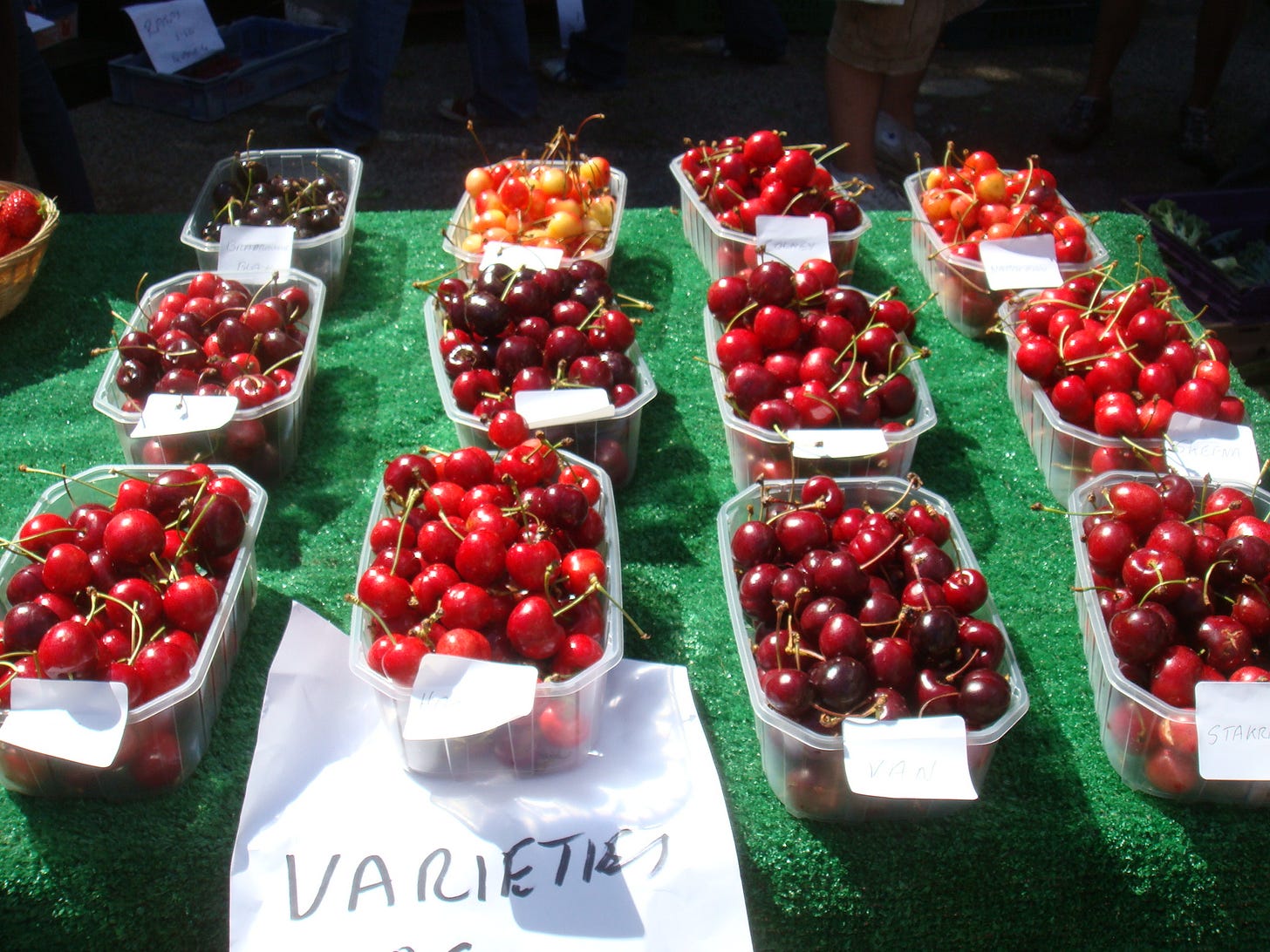
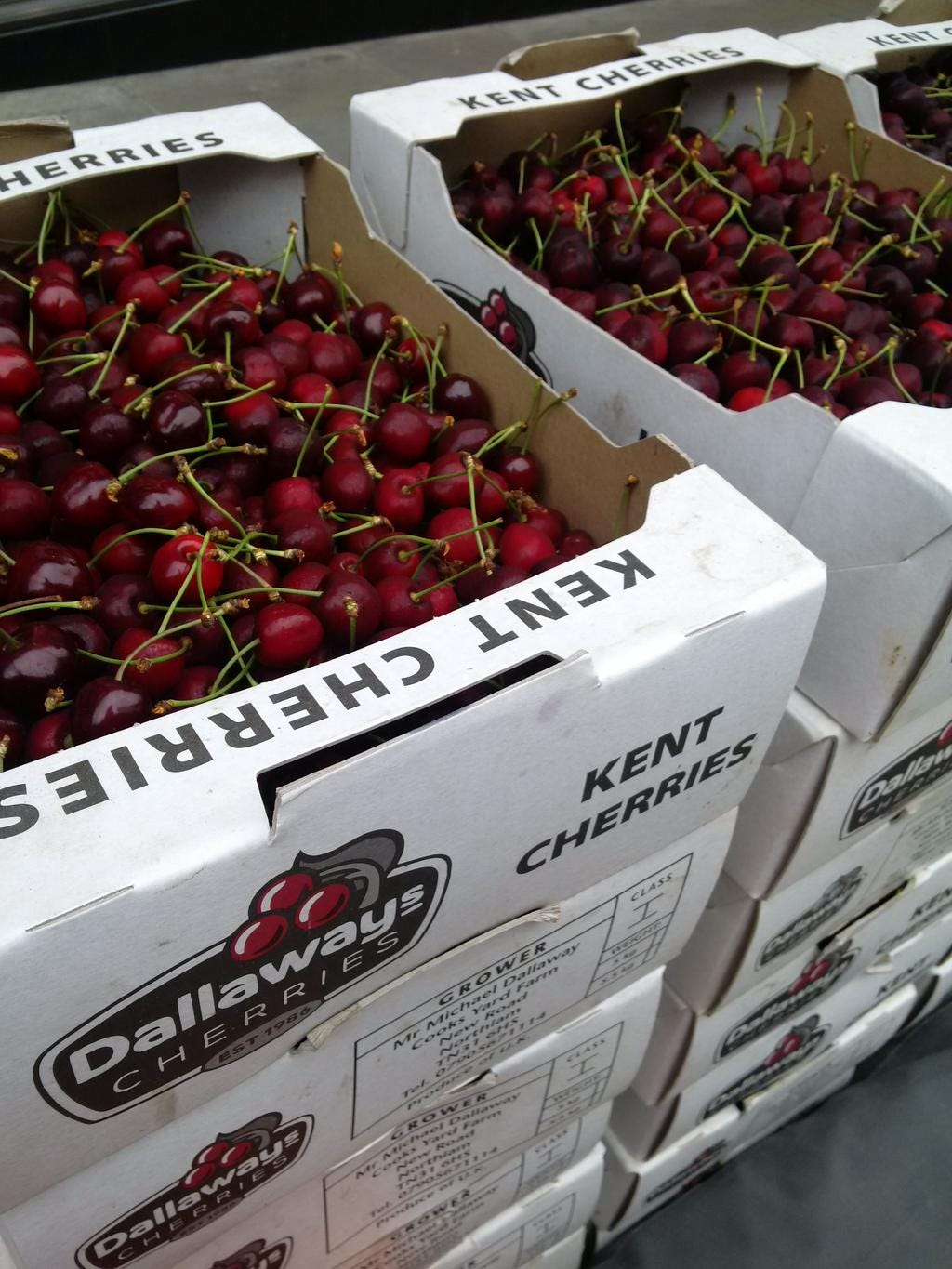
Love cherries but as your article points out there are so few grown here now. Such a shame. We do buy from roadside stalls when we see them. Thanks you for this interesting history.
Cherries are my favorite fruit. And I remember those giant cherry trees, my grandmother had a few of those in her dacha in Ukraine and I remember climbing them as a kid. They were cut down, I don't remember why.
Great post! And thank you for the shoutout :) !